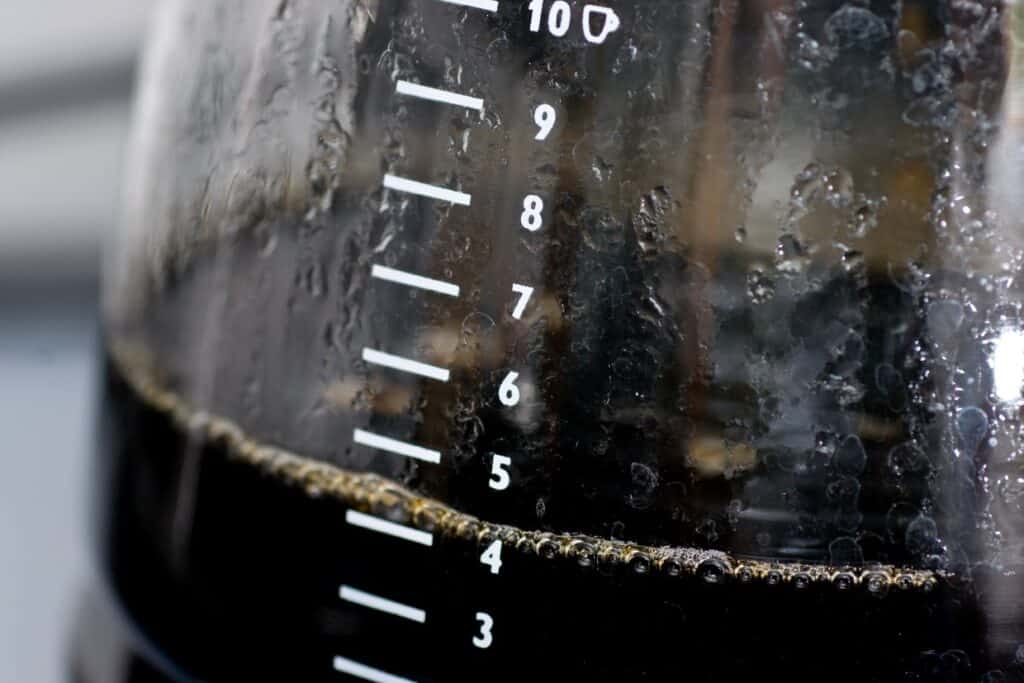Maintaining a clean coffee maker is essential for both the taste of your coffee and the lifespan of your machine. Over time, hard water minerals can build up in your coffee maker, affecting the flavor of your brew and potentially causing damage to the machine. Cleaning coffee maker with vinegar is an effective and economical way to remove these deposits and sanitize the coffee maker.

The process of cleaning your coffee machine with vinegar involves running a mixture of water and vinegar through the machine to dissolve and wash away mineral deposits and oils left by coffee beans. This method is not only straightforward but also eco-friendly, as vinegar is a natural cleaning agent. By performing this maintenance routine regularly, your coffee maker should remain in good working order, and your coffee tastes fresh.
Benefits of cleaning with vinegar
Cleaning coffee maker with vinegar has several advantages. These include:
- Effectiveness: Vinegar is highly effective at removing mineral buildup and oils from coffee beans. These can all affect the taste of your coffee.
- Non-toxic: It is a safe, non-toxic alternative to many chemical cleaners. This ensures that no harmful residues are left behind.
- Affordability: Vinegar is economical. It costs less than specialized coffee maker cleaners.
- Accessibility: You may already have vinegar in your kitchen. If not, you can easily find it at any grocery store.
- Simplicity: The cleaning process is straightforward and can be performed with minimal effort. You’ll just need to prep the materials, run a cleaning cycle, then rinse.
- Environmentally friendly: Vinegar is biodegradable and less harmful to the environment compared to synthetic cleaning agents. It breaks down naturally and is safer than many other cleaners.
Vinegar’s mildly acidic nature is gentle on the coffee maker’s internal parts, which helps to maintain the machine’s longevity by disinfecting and deodorizing it. Regular maintenance with vinegar can result in a better-tasting cup of coffee and a longer-lasting appliance.
Preparing the coffee maker for cleaning
Before cleaning coffee maker with vinegar, ensuring safety and having the correct materials at hand are critical. Doing this prevents damage to the appliance and ensures an effective cleaning process.
Safety precautions
Before beginning the cleaning process, it’s essential to take certain safety measures to protect both you and your coffee maker. These precautions are simple, but they are crucial to a safe and effective cleaning routine.
- Unplug the coffee maker: Make sure that the appliance is unplugged and cool to the touch to avoid electric shock or burns. This step is an essential part of any electrical appliance maintenance to prevent accidents.
- Remove any leftover coffee grounds: Dispose of any remaining coffee or coffee grounds from the filter basket. This prevents mold from forming and the grounds from clogging during the cleaning process.
- Review the manufacturer’s manual for guidance: Review your coffee maker’s manual for any specific instructions or warnings about using vinegar or other cleaning agents. Each model has different recommendations or restrictions.
Gathering necessary materials
Having specific items on hand will streamline your cleaning routine and ensure a thorough and efficient process, leading to better results and a fresher-tasting coffee every time. To clean the coffee maker effectively, gather these materials:
- White vinegar: The main component for cleaning coffee maker with vinegar. This is used as a descaling agent to remove buildup. It’s important to use white vinegar as it is effective yet gentle enough not to damage the internal components of your coffee maker.
- Water: This will dilute the vinegar and rinse the machine. It will help to make sure that all of the vinegar residues are thoroughly removed.
- Clean, dry cloth: To wipe down the exterior of the coffee maker. This step is crucial for removing any spills or stains on the outside, keeping your coffee maker looking as good as new.
- Bowl or mug: Catches any vinegar solution during the cleaning cycle. Make sure the container is large enough to prevent any mess.
- Soap: This cleans the removable parts post-vinegar treatment. Use a mild, non-abrasive soap to ensure that the parts of your coffee maker are cleaned without being damaged.
“Cleaning a coffee pot with vinegar is a frugal hack I learned from my mother. Because we had hard water, there would be build-up in the coffee pot, and everything would brew more slowly. So, she taught me how to use vinegar to clean it out. Also, pro tip: use white vinegar — not apple cider or any other kind of vinegar — and then run through a few brewing cycles with water before using again to get rid of the vinegar flavor and smell.”
— Leah Ingram, Real Sophisticated Consumer
Cleaning process
Like cleaning other kitchen appliances, regular cleaning of the coffee maker is essential for maintaining its performance and ensuring the best flavor from your coffee. These steps cover the safe and effective use of vinegar as a cleaning agent for your coffee maker:
Mixing the vinegar solution
First, create a cleaning solution with equal parts water and white vinegar. For a standard coffee maker, you will typically need a mixture of 4 cups of water to 4 cups of vinegar. This will serve as an effective descaler, breaking down mineral build-up inside the coffee maker.
Running the cleaning cycle
Once the solution is ready, pour it into the coffee maker’s water reservoir. Initiate a brewing cycle and allow the solution to run through the machine completely. After the cycle finishes, the acidic properties of the vinegar will have helped to dissolve any limescale or oil build-up inside.
Rinsing the coffee maker
Remove all traces of vinegar from the coffee maker. Fill the water reservoir with fresh water and run at least two full brewing cycles. Inspect the coffee maker for any lingering vinegar smell or taste. Repeat the rinsing process until the water runs clear and the smell is no longer present.

Maintenance tips
Maintaining a coffee maker ensures its longevity and the quality of the coffee it brews. A consistent cleaning regimen removes mineral buildup and coffee oils that can affect taste and function.
Regular cleaning schedule
If you’re someone who loves their daily peppermint mocha, it’s crucial to clean the coffee maker after each use. One should discard any remaining coffee grounds and wash the pot, filter basket and lid with warm, soapy water. Wiping the exterior with a damp cloth keeps the machine free of stains and spills.
Deep cleaning frequency
Every month, the coffee maker should undergo a deep cleaning with vinegar to descale and sanitize the interior components. Handle this by running a 1:1 solution of white vinegar and water through a brewing cycle, followed by two to three cycles of plain water. While you’re doing this, prep some hash brown breakfast casserole to go alongside your cup of coffee.

Final thoughts
Cleaning coffee maker with vinegar is a good move. It’s cheap, easy to find and safe to use. Regular cleaning with vinegar will keep your coffee tasting great and your machine running well for a long time. Just mix equal parts water and vinegar, run it through the machine and then rinse with water. Doing this simple thing every month will help a lot. So, next time your coffee starts to taste a bit off, remember that vinegar is your friend for a quick, easy clean that will get things back to normal so you can enjoy your morning cup and a slice of coffee cake.
Sara Nelson is the food blogger behind Real Balanced, a site that showcases easy and balanced recipes. Since 2017, she has shared delicious and nutritious recipes with thousands of blog readers and social media followers. Sara lives in Wisconsin with her husband, two children and their dog.